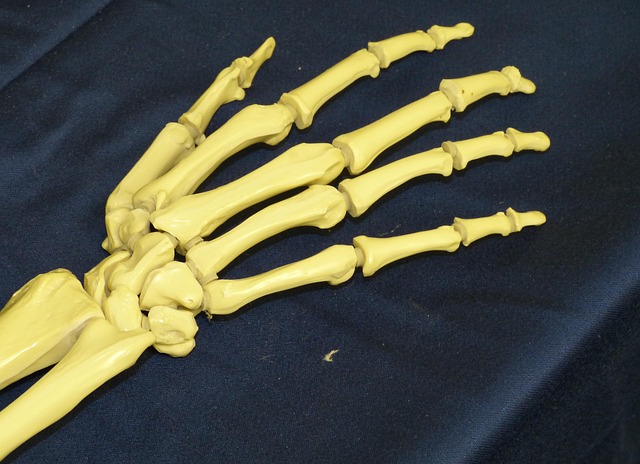Post-injection flare-ups after steroid injections for joint inflammation are common, caused by the body's immune response to steroids. Manage discomfort with anti-inflammatory meds, topical NSAID creams, cold compresses, hydration, antioxidants, and gentle exercises. Seek immediate medical attention for persistent or severe symptoms. Prevent future flare-ups through regular follow-ups, balanced nutrition, exercise, good posture, and managing underlying conditions.
“Steroid injections are often a critical tool in managing joint inflammation, but they may come with temporary discomfort and flare-ups. This comprehensive guide explores post-injection symptoms, delving into the causes and typical timelines of these reactions. We offer effective strategies for alleviating discomfort, from topical treatments to home remedies.
Additionally, we outline when medical attention is imperative for severe reactions and provide insights into long-term care to prevent future flare-ups, ensuring patients can maximize the benefits of steroid injections while minimizing associated challenges.”
Understanding Post-Injection Flare-ups: Causes and Timelines
Post-injection flare-ups are a common occurrence after steroid injections for joint inflammation, despite efforts to minimize them. These flares can manifest as increased pain, swelling, and stiffness in the treated area, typically peaking within 24–72 hours after the injection. Understanding the causes of these reactions is crucial for managing expectations and providing adequate care.
Several factors contribute to post-injection flare-ups. One primary cause is the body’s natural immune response to the foreign substance (steroids) introduced into the joint space. This reaction can lead to vasodilation, increased blood flow, and inflammation, exacerbating existing symptoms. Additionally, the rapid dissolution of steroids means that the anti-inflammatory effects may subside quickly, leading to a temporary recurrence of pain and swelling. Timely intervention with over-the-counter or prescription anti-inflammatory medications can help mitigate these flare-ups and promote faster recovery.
Managing Discomfort: Topical Treatments and Home Remedies
Managing discomfort after steroid injections for joint inflammation can be achieved through a combination of topical treatments and home remedies. Topical creams containing non-steroidal anti-inflammatory drugs (NSAIDs) offer a straightforward, over-the-counter solution to alleviate pain and swelling at the injection site. These creams provide targeted relief without systemic side effects often associated with oral NSAIDs.
Additionally, home remedies like applying cold compresses for 15-20 minutes several times a day can significantly reduce inflammation and discomfort. Elevating the affected joint above heart level also helps minimize swelling. Staying hydrated and consuming foods rich in antioxidants supports the body’s natural healing process, while gentle exercises like stretching or walking can promote blood circulation and ease post-injection soreness.
When to Seek Medical Attention for Severe Reactions
If you experience severe or persistent symptoms after a steroid injection for joint inflammation, it’s crucial to seek medical attention promptly. While minor discomfort and redness are common, more serious reactions require immediate care. Signs that indicate a severe reaction may include intense pain, swelling, warmth, or bruising at the injection site, as well as difficulty breathing, dizziness, or rapid heartbeat. These could be indicators of an allergic reaction or another concerning condition that demands prompt intervention from a healthcare professional.
They can provide guidance on managing symptoms and determine if further treatment is necessary to prevent complications. It’s important not to ignore these warning signs, as early intervention can help mitigate potential risks associated with severe reactions to steroid injections.
Long-Term Care: Preventing Future Flare-ups After Injections
After experiencing post-injection flare-ups, it’s crucial to adopt a long-term care strategy to prevent future occurrences. Steroid injections for joint inflammation can provide significant relief in the short term, but managing them effectively is key to avoiding recurring discomfort. One effective approach is to maintain regular follow-up appointments with your healthcare provider. These visits allow for close monitoring of your condition and timely intervention if any signs of a flare-up emerge.
Additionally, adopting a proactive lifestyle can significantly reduce the likelihood of future flare-ups. This includes maintaining a healthy weight through balanced nutrition and regular exercise, as excess weight can exacerbate joint stress. Staying active within your comfort level and practicing good posture can also help alleviate pressure on joints. Furthermore, managing underlying conditions such as arthritis or tendonitis through medication, physical therapy, or other recommended treatments is essential in preventing steroid injection flare-ups from reoccurring.
Steroid injections for joint inflammation can be highly effective, but managing post-injection flare-ups and temporary discomfort is crucial for optimal long-term care. By understanding the causes and timelines of these reactions, utilizing suitable topical treatments and home remedies, and knowing when to seek medical attention for severe reactions, patients can minimize discomfort and prevent future flare-ups. Implement these strategies to enhance recovery and maintain joint health over time.
